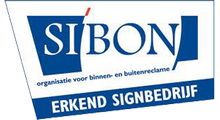Agreement Format in Gujarati Pdf
Agreement Format in Gujarati PDF: Tips for Error-Free Contracts
The Gujarati language is one of the most widely spoken and written languages in Western India. It boasts of a rich literary and cultural heritage and has been used for centuries for official and legal documents. If you are looking to create or translate an agreement in Gujarati language, it is essential to understand the format and structure of a standard agreement and how to avoid common errors. In this article, we will share tips on how to create an agreement format in Gujarati PDF that is error-free and professional.
1. Understand the Purpose of the Agreement
Before you begin drafting an agreement, it is essential to be clear about the purpose of the contract. The agreement can be for a lease, a sale, or any other type of transaction. It may also include clauses for confidentiality, payment terms, and dispute resolution. Understanding the purpose of the agreement will help you determine the appropriate format and language to use.
2. Use Simple Language
When drafting an agreement in Gujarati language, it is important to use simple and clear language that is easy to understand. Avoid using legal jargon or complex sentences that may confuse the reader. Use simple and straightforward language that is easy to comprehend.
3. Be Precise and Accurate
An agreement is a legal document that must accurately reflect the terms of the transaction. It is crucial to be precise and accurate in expressing the details of the agreement. Use exact figures and avoid making vague statements that may be open to interpretation. Ensure that all the terms are unambiguous and can be easily understood.
4. Include Essential Clauses
While drafting the agreement format in Gujarati PDF, consider including essential clauses that will protect the interests of all parties involved. Some of these clauses may include confidentiality, payment terms, liability, termination, and dispute resolution. Ensure that all the clauses are clearly stated and are in line with the purpose of the agreement.
5. Use Appropriate Font and Formatting
The font and formatting of the agreement are also important factors to consider. Use a font that is easy to read and ensure that the text is properly formatted with headings, subheadings, and numbered paragraphs. The formatting should be consistent throughout the document.
6. Proofread and Edit
Once you have completed the agreement format in Gujarati PDF, it is essential to proofread and edit the document. Look out for spelling, grammar, and punctuation errors. Ensure that all the clauses are in the correct order and that the document is properly formatted. It is also advisable to have a second person proofread the agreement to ensure that it is error-free.
In conclusion, drafting an agreement format in Gujarati PDF requires careful attention to detail and accuracy. Ensure that all the clauses are clear and unambiguous, and the language used is simple and easy to understand. You can also consider seeking the services of a professional professional to ensure that the agreement meets all the necessary legal requirements and is optimized for search engines.

